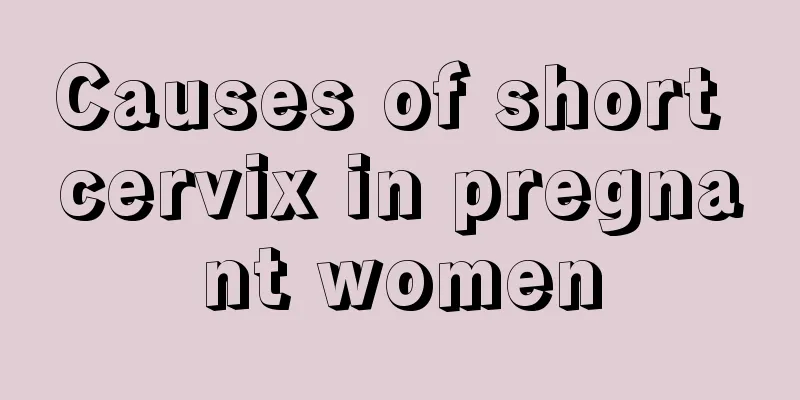Colposcopic cervical biopsy

|
Colposcopy has a very intuitive effect on cervical biopsy. After completing this examination, you will find that some types of diseases occurring in your cervix can be known through this examination, and you will not be misdiagnosed. In addition, before the examination, it is best for the patient to hold his urine, which will make the examination process smoother and the results more accurate. 1. Cervical and endocervical canal biopsy is the most reliable and indispensable method for diagnosing cervical cancer and its precancerous lesions. The following points should be noted during cervical biopsy: ① It is advisable to perform multiple-point biopsy under iodine staining or colposcopy. ② The materials include the lesion and surrounding tissues, including both epithelial tissue and mesenchymal tissue. ③ Repeat biopsy or incisional biopsy should be performed when clinical or cytological suspicion is present. 2. Endocervical curettage, scraping the endocervical lining tissue for pathological examination, helps to determine whether there are lesions in the endocervical canal and whether CIN or cancer involves the endocervical canal, but there is currently no consensus on whether it should be a routine examination. Indications for endocervical curettage are: ① Pre- and postmenopausal women with abnormal cytology or clinical suspicion, especially when adenocarcinoma is suspected. ② Colposcopic lesions involve the cervical canal. ③ Those with multiple positive or suspicious cytology results, negative or unsatisfactory colposcopy, or negative colposcopy biopsy. 3. Cervical cone excision is a traditional and reliable diagnostic method for cervical cancer. When cervical smears are positive for multiple times but cervical biopsy is negative; or when the biopsy is carcinoma in situ but invasive cancer cannot be ruled out, cervical conization should be performed. Due to the widespread use of colposcopy, the number of diagnostic conizations has decreased significantly. It is believed that colposcopic biopsy and cervical conization have equivalent roles in diagnosing CIN and invasive cervical cancer. 4. Circular electrosurgical excision of the cervix and large circular excision of the transformation zone are new diagnostic and treatment methods for CIN and early invasive cancer. Its indications are: ① Dissatisfied with vaginal examination. ② Endocervical curettage is positive. ③The results of cytology and cervical biopsy are inconsistent. ④ The lesion is severe, such as severe atypical hyperplasia or cytological changes suggesting invasive changes. However, this diagnostic method has obvious thermal damage effects, and whether it is suitable for the early diagnosis of cervical cancer needs further study. |
<<: What to eat is good for breasts?
Recommend
Where do ovarian cysts grow?
Ovarian cyst is a very complicated female disease...
How can pregnant women learn to feel the fetal position themselves?
For pregnant women, the baby in the belly must be...
Must-check items for pre-pregnancy checkup at an advanced age
It is very common for older women to create babie...
What are the symptoms of kidney yang deficiency in women
If women do not pay attention to the protection o...
How to drive in the rain during a typhoon? Do you need to turn on the fog lights when driving in the rain?
Typhoons are common natural weather. Severe typho...
What is the principle of sugar-free drinks? Are sugar-free drinks harmful to health?
Now the weight loss market is becoming more and m...
Menstruation delayed for 18 days without pregnancy
What happened if my period was delayed for 18 day...
What causes pain on the left side of a woman's belly button?
Abdominal pain is one of the common diseases in d...
How long after caesarean section can I have a second child
Women who have undergone cesarean section will ne...
Girls say inappropriate psychology
What is the psychological state when girls say it...
Angry during early pregnancy
Women should not get angry often during pregnancy...
Correct sex during pregnancy
Most people can choose to sleep on their side or ...
How to adjust the gestational sac to the right uterine angle
After a woman becomes pregnant, a gestational sac...
How are uterine nodules formed?
The uterus is a very critical organ for the femal...
What department should I go to for prenatal checkup?
Both the pregnant father and the pregnant mother ...









